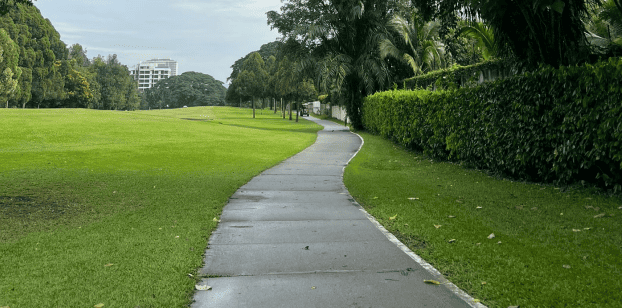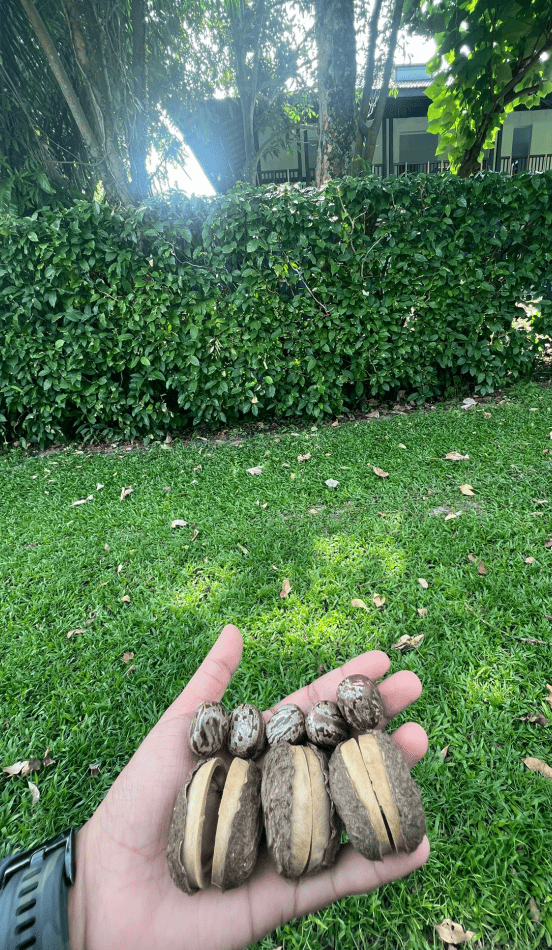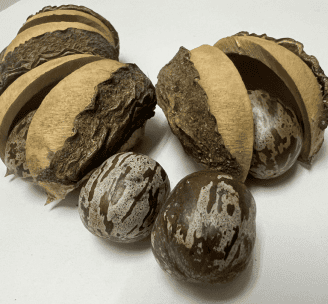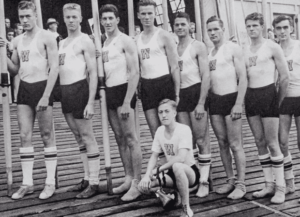History of the Rubber Tree in Malaysia
Rubber was introduced by British colonists to Singapore in 1877 via Brazil, Kew Gardens in London and Sri Lanka. Within a decade after it was introduced, slash and burn agriculturalists in remote parts of Southeast Asia planted rubber trees in their cultivated plots.
Rubber tree at 15th Hole New Course behind the hedges
Malaysia had an ideal climate and, soil for rubber, and plenty of land. Production increased dramatically after the 1890s when there was a huge surge in demand for rubber. For many years tin and rubber were Malaysia’s primary exports.
By the 1930s, Malaysia produced half of the world’s rubber. Many of the Chinese and Indians who live in Malaysia today are descendants of labourers brought to work on the rubber plantations. For the most part the plantations were owned by European owners. They helped transform Malaysia into Britain’s richest colony. After independence, many of the plantations were turned over to Malaysian hands and some were converted to palm oil plantations.
Declining prices and competition have forced many farmers to abandon rubber, and rubber tappers are becoming a dying breed. Between 1999 and 2004, 300,000 hectares of the 1.4 million hectares of planted rubber were abandoned, in many cases in favour of oil palms which are more lucrative. So many have given up on rubber that some Malaysian rubber manufacturers have to now import rubber, and Malaysia has become one of the world’s largest importers of rubber.
Traditionally, just under half of Malaysia’s rubber production came from smallholders rather than from estates and plantations. In the 1990s, a typical rubber tapper, who spent about six hours a day tapping 400 trees, made about $131 a month. Farmers received $65 a month from the Government if their income fell below $60 a month.
The seeds scatteres far from parent tree
The woody capsule of Rubber seed
Rubber Tree at Royal Selangor Golf Club
Hevea brasiliensis or the rubber tree is deciduous and, medium-sized, growing between 15-30 m in the wild and reaching up to 43 m in height at the 15th Hole New Course on the left side. It is located behind the hedge of Baphia. Its conical to oblong- shaped crown can be recognised from afar. The trunk is cylindrical, pale to dark brown with a smooth surface. The bark also can also produce white or cream-colour latex if wounded.
The leaves are trifoliate, in spiral and joined to a long stalk (7-10 cm). The flowers are small, pungent, creamy-yellow and have no petals. The seeds are in a woody capsule with three lobes, 5 cm in diameter. Each capsule holds three seeds. Once ripe the capsule will burst with a loud sound and the seeds are scattered far from the parent tree. The rubber tree starts bearing fruit at four years of age.
It is the most economically important member of the genus Hevea because the milky latex extracted from the tree is the primary source of natural rubber. It can withstand drought and waterlogging for a while, but prefers well drained soils.
The Government continues to promote the development of Malaysia’s resource-based industries to diversify the country’s sources of growth. In addition to fiscal incentives which are currently available for promoted products and activities, the Government has further fine-tuned the incentives to promote specific activities, among which is the rubber products industry.







